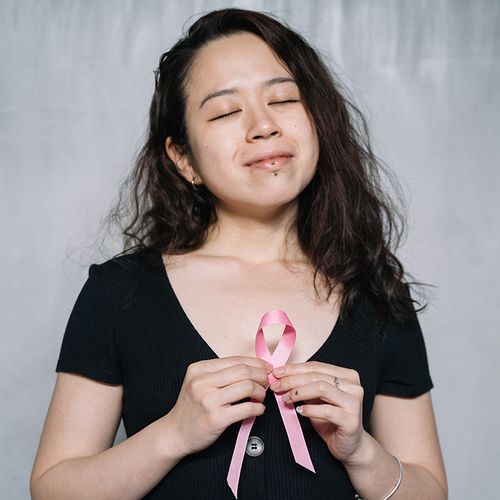One in eight—that's how many American women discover that they have breast cancer. But this diagnosis is not a death sentence. More than two million women in the US today have survived breast cancer. Many can thank screening techniques that detect the disease early-which often allows for additional treatment options and a better outcome.
Women who get mammograms (X-rays of the breast) every one to two years have a lower risk of dying from breast cancer-about 20% lower for women in their 40s and about 25% lower for women in their 50s and 60s. Among breast cancer screening techniques, only mammography has been proven to reduce death rates from the disease.
Controversy: The American Cancer Society recommends that women age 40 and over have yearly mammograms. Yet in April 2007, the American College of Physicians advised against automatic yearly mammograms for women in their 40s, citing the physical discomfort of screening procedures...radiation exposure...and risk for false-positive results.
My view: Get annual mammograms beginning at age 40. Reasons…
- The death rate reduction due to mammography, though greater in older women, is still substantial in women ages 40 to 49.
- Cancers in women under age 50 often grow faster and are deadlier than those in older women.
- The needle biopsy used to confirm or exclude a mammogram's findings usually is minimally invasive, takes less than 30 minutes and leaves only a freckle-sized scar.
Cad Mammography
With computer-aided detection (CAD) mammography, computer software analyzes a digital (rather than film) mammogram, marking suspicious areas. It now is offered by about 30% of mammography centers.
Controversy: A study in The New England Journal of Medicine found that CAD resulted in 31% more callbacks for additional tests and 20% more biopsies. Often, additional testing revealed no abnormalities.
My view. If a local facility offers it, it is prefer able to use CAD ask your doctor for a referral). Reasons…
- CAD mammography increases detection of ductal carcinoma in situ (DCIS), perhaps cancer's earliest stage.
- CAD mammography can spot various breast abnormalities. Some may be cancer, some may not. But all merit subsequent testing
Ultrasound: The Next Step
This noninvasive test is routinely performed after a suspicious area is found. It uses sound waves to create a picture (sonogram) that shows if the area is a harmless fluid-filled cyst...a harmless variation of normal tissue...or a solid mass that should be biopsied. Ultrasound is safe, painless, widely available, relatively inexpensive and usually covered by insurance.
The American College of Radiology Imaging Network recently presented the results of a three-year study designed to show whether annual screening with mammography and ultrasound effectively detects cancer in women whose breasts are dense (have more glandular and connective tissue and less fatty tissue). If so, ultrasound may become a standard precancer screening technique for such women. Ultrasound may help distinguish between normal dense breast tissue and cancerous tissue, which also is dense.
MRI: The New Recommendation
Magnetic resonance imaging (MRI) uses a magnetic field and radio waves to generate detailed pictures revealing cancers that mammograms may miss.
Note: Any woman recently diagnosed with breast cancer in one breast should have an MRI of the other breast.
The American Cancer Society recommends that women with the highest risk for breast cancer-20% or greater-receive a yearly mammogram and yearly MRI. Any one of the following criteria places a woman in this group…
- Testing positive on genetic tests for the BRCA1 or BRCA2 gene—linked to breast cancer.
- Having a first-degree relative (mother, sister or daughter) who tested positive for either gene.
- Having two or more first-degree relatives with breast cancer.
- Having had chest radiation treatment for Hodgkin's disease (a cancer of the lymphatic system)
MRI is very expensive, and insurance may not cover it. Women at "moderately increased" lifetime risk-a 15% to 20% risk-should talk to their doctors about the most appropriate screening method for them. This group includes…
- Women with dense breasts. Cancer is three to five times more likely to develop in dense breasts.
- Women with fibrocystic or lumpy breasts, since such breasts often are dense.
- Women who have had a biopsy that showed lobular carcinoma in situ (LCIS), an irregular growth of noncancerous cells. LCIS increases breast cancer risk.
Promising Technologies
Several other breast cancer screening techniques show promise.
- Gamma camera. A woman is injected with a short-lived radioactive substance that gravitates to a diseased area, where it emits gamma waves recorded by the camera. Several companies recently have created gamma cameras specifically for breast imaging, and early test results are promising. Already some breast centers use gamma cameras as a next step after a suspicious mammogram-because the test is far less expensive than MRI.
- Positron emission tomography (PET). This technique scans the whole body to see if diagnosed breast cancer has spread. When radioactive glucose is injected into the body, cancerous tissues accumulate more of it...and emit more positrons (positively charged molecular particles), which appear as bright areas on the PET images.
Caution: A technique called thermography cannot accurately screen for breast cancer. Thermography detects tissues with higher temperatures-including inflamed or diseased tissues, not just cancer. Do not risk your health by putting your faith in it.
Screening Guidelines
The American Cancer Society recommends the following...
- Get a clinical breast exam (manual exam by a doctor) every three years in your 20s and 30s and yearly thereafter.
- Know how your breasts normally feel. Report any change promptly to your doctor.
Watch for: A new lump...new asymmetry... dimpling of skin...inverted nipple...spontaneous nipple discharge...rash or color change... unusual soreness or swelling,
- Have a yearly mammogram starting at age 40.
- If you're at high risk, get a yearly mammogram and MRI.
